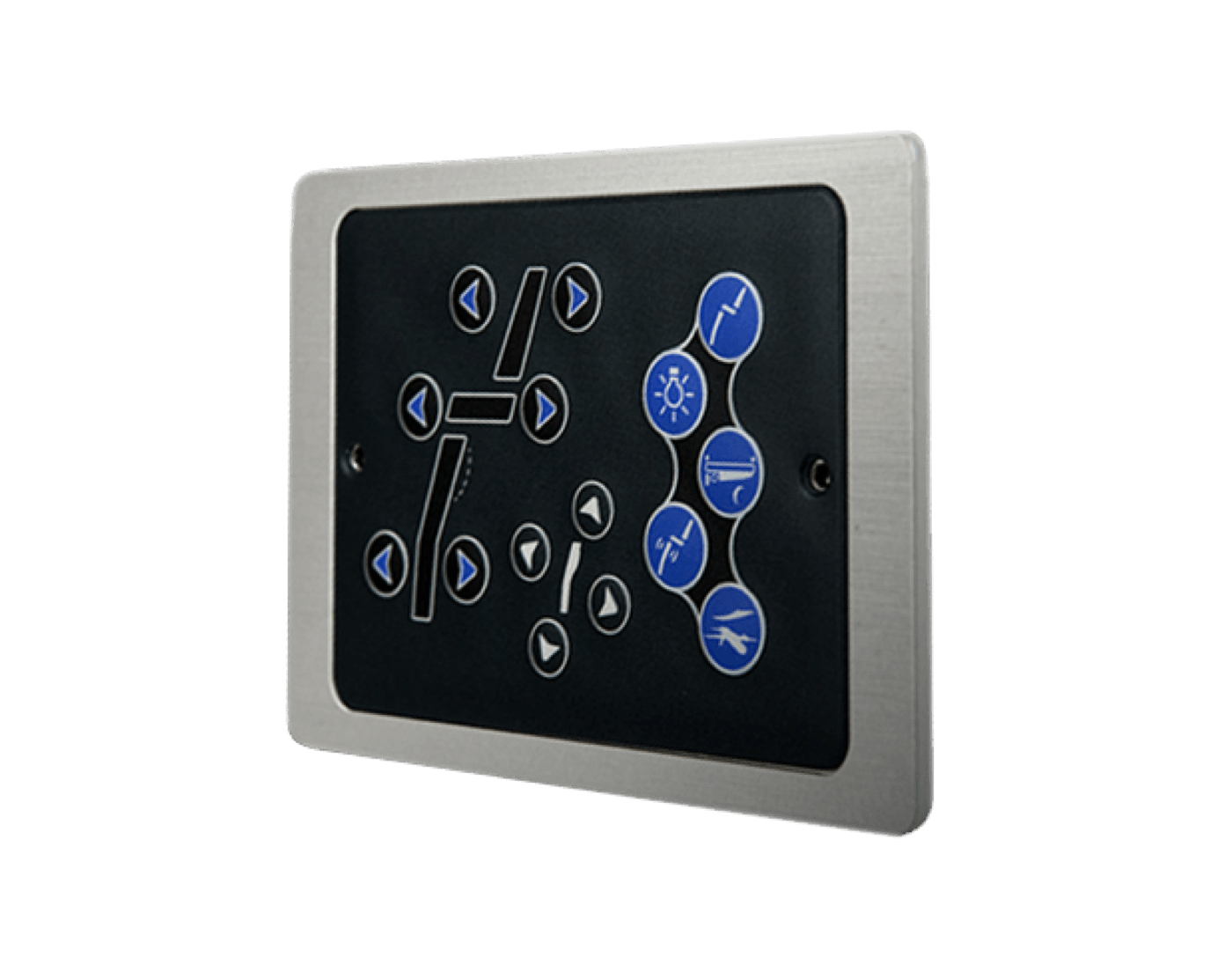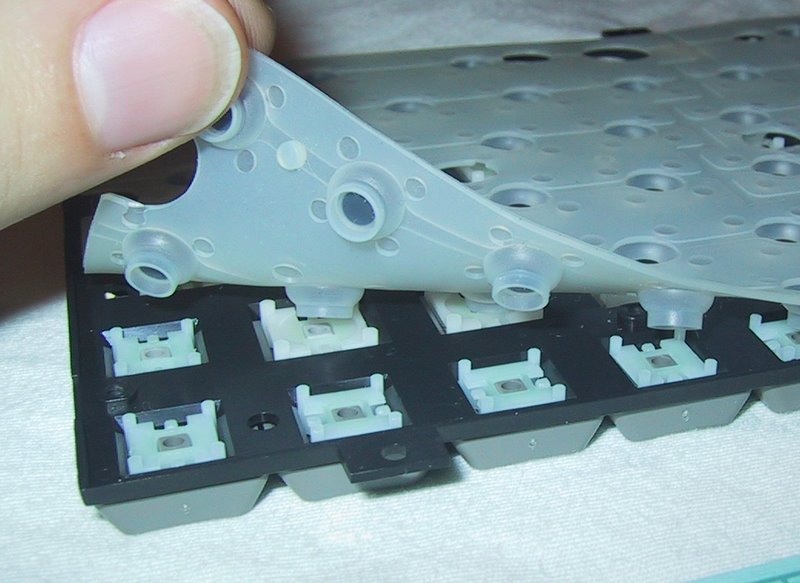How to Pick the Right Membrane Switch for Your Technology Needs
How to Pick the Right Membrane Switch for Your Technology Needs
Blog Article
Membrane Change Innovation: The Key to Trustworthy and Affordable User Interfaces
Membrane layer button technology has arised as an essential element in the design of customer interfaces, offering both dependability and cost-effectiveness throughout a varied variety of applications. As we discover the multifaceted benefits of membrane buttons, their possibility for development increases concerns about future applications and advancing patterns.
Understanding Membrane Switch Innovation
Membrane layer switch modern technology is a commonly made use of interface solution in different electronic tools, using a smooth blend of capability and layout. This modern technology integrates numerous layers of materials, typically being composed of a graphic overlay, spacer layer, and a circuit layer. The graphic overlay presents the user interface components, while the spacer layer separates the circuit layer from the overlay till a user triggers a button.
When stress is related to the overlay, the circuit layer finishes the electric circuit, sending out a signal to the device. This mechanism enables various configurations, including responsive feedback and backlighting choices, enhancing customer interaction. Membrane layer buttons are usually manufactured making use of durable products such as polyester or polycarbonate, guaranteeing longevity and resistance to ecological aspects like moisture and dirt.
The flexibility of membrane switches enables their application in varied sectors, consisting of medical tools, consumer electronic devices, and commercial controls. Their compact style enables for combination into space-constrained settings, giving a reliable interface without jeopardizing aesthetic charm. Recognizing the complexities of membrane layer switch innovation is important for makers and developers seeking to produce reputable and effective human-machine interfaces.
Key Advantages of Membrane Layer Buttons
While various interface services exist, membrane changes deal distinct advantages that make them a recommended choice in many applications. One of the primary advantages is their resilience; membrane switches are designed to withstand rough environmental conditions, consisting of wetness, dust, and temperature level fluctuations, making sure resilient performance. This strength considerably minimizes the demand for regular substitutes, therefore reducing overall upkeep expenses.

Furthermore, membrane buttons are lightweight and small, making them suitable for applications where room is restricted. Their low-profile layout adds to a sleek look without jeopardizing performance.
Cost-effectiveness is additionally a remarkable advantage, as the manufacturing procedure for membrane changes tends to be less costly contrasted to typical mechanical buttons. This cost, incorporated with their integrity and ease of setup, positions membrane switches as a functional service for a large range of markets looking for efficient and effective interface.
Applications Across Different Industries
Just how do membrane layer original site switches adjust to the diverse requirements of various industries? Membrane layer switch technology is progressively recognized for its convenience, making it appropriate for a vast array of applications across numerous industries. In the clinical field, membrane layer switches are utilized in diagnostic devices and person surveillance tools, where their longevity and simplicity of cleansing are vital for keeping health standards. The auto sector utilizes these switches in control panels and control panels, using a streamlined aesthetic while ensuring straightforward operation.
In customer electronic devices, membrane buttons provide a compact service for push-button controls and home devices, boosting customer experience through instinctive style. In addition, the industrial market leverages membrane layer switches for machinery control panels, taking advantage of their resistance to rough settings, such as moisture and dirt.
Army and aerospace applications likewise use membrane layer buttons for their reliability and capacity to hold up against severe problems, making sure functional performance in crucial circumstances. In addition, the food and beverage sector takes on these switches for automated systems, where sanitation and convenience of operation are paramount. Eventually, membrane layer switches are tailored to meet the one-of-a-kind demands of each market, proving their important duty in contemporary technology interfaces
Style and Modification Choices

In the realm of membrane layer switch modern technology, design and personalization alternatives play a pivotal role in enhancing capability and customer interaction. These buttons can be tailored to meet specific functional demands and aesthetic preferences, making them versatile elements in different applications.
One of the main customization options is the design of the switch look at here now itself, which can be designed to fit unique user interfaces and ergonomic factors to consider. By changing the form, size, and plan of switches, manufacturers can produce instinctive styles that facilitate ease of use. In addition, the incorporation of various shades and graphic overlays permits branding and improved presence, guaranteeing that users can promptly recognize features.
Furthermore, membrane switches can be crafted with numerous responsive feedback systems, such as elevated switches or distinct clicks, to boost the individual experience. Various products can also be chosen for resilience and ecological resistance, dealing with elements such as moisture, temperature changes, and chemical exposure.
Eventually, the comprehensive layout and customization choices offered in membrane button technology empower businesses to create tailored options that not only fulfill useful needs but likewise straighten with their branding and functional needs.

Future Trends in Membrane Layer Switches
As membrane layer button innovation remains to advance, future fads are progressively focused on enhancing individual experience and integrating sophisticated performances. One substantial pattern is the integration of touch-sensitive and capacitive technologies into traditional membrane layer buttons. This Read More Here development allows for even more instinctive customer interfaces, offering tactile comments while keeping a smooth layout.
One more arising trend is using environmentally friendly products, driven by the expanding demand for sustainable manufacturing practices. Producers are seeking to minimize their carbon footprint by making use of recyclable substrates and low-impact inks, aligning with worldwide sustainability goals.
Furthermore, the rise of the Net of Points (IoT) is triggering the unification of smart attributes right into membrane layer buttons. Enhanced connection choices will certainly allow tools to interact with each various other, enabling for smooth assimilation right into broader systems.
Additionally, improvements in printing modern technologies, such as digital printing, are enabling better layout flexibility and modification. This makes it possible for suppliers to produce detailed layouts and vibrant colors cost-effectively.

Final Thought
In final thought, membrane layer switch technology represents an essential innovation in customer interface layout, providing substantial benefits in longevity, personalization, and cost-effectiveness. As advancements continue to arise, especially in touch-sensitive interfaces and sustainable products, the possibility for membrane layer switches over to boost customer experience and capability remains encouraging.
Report this page